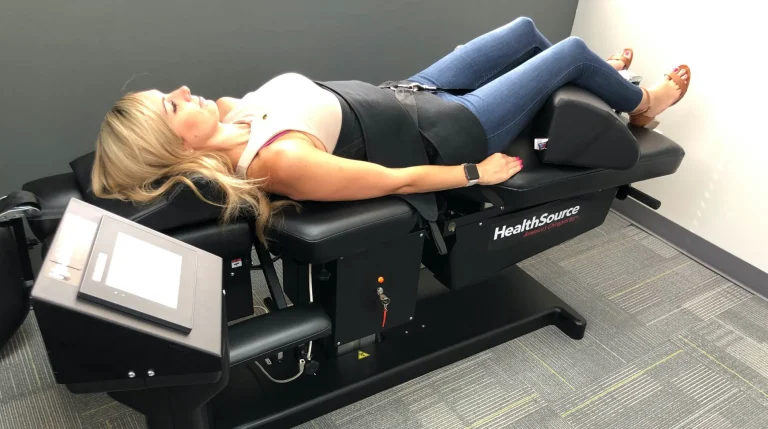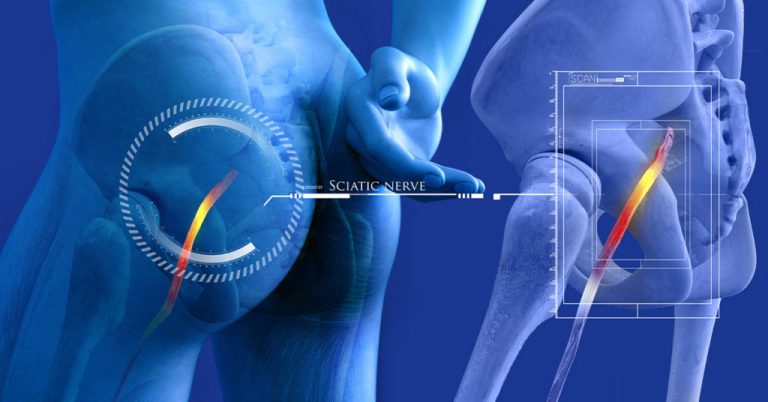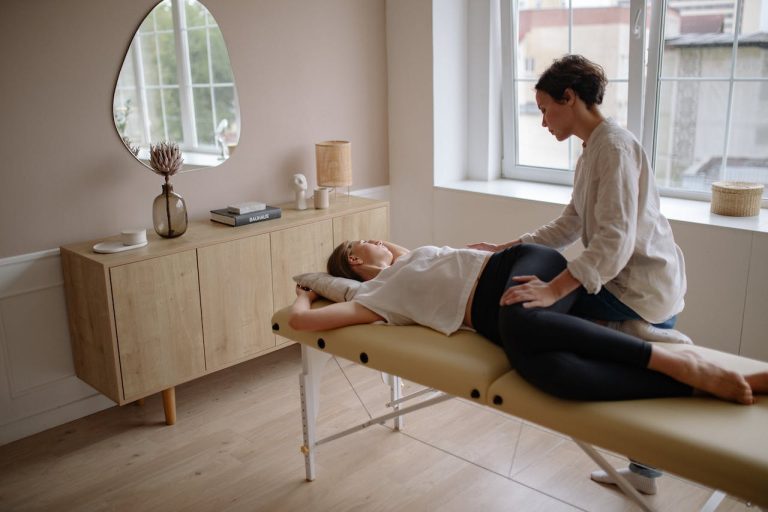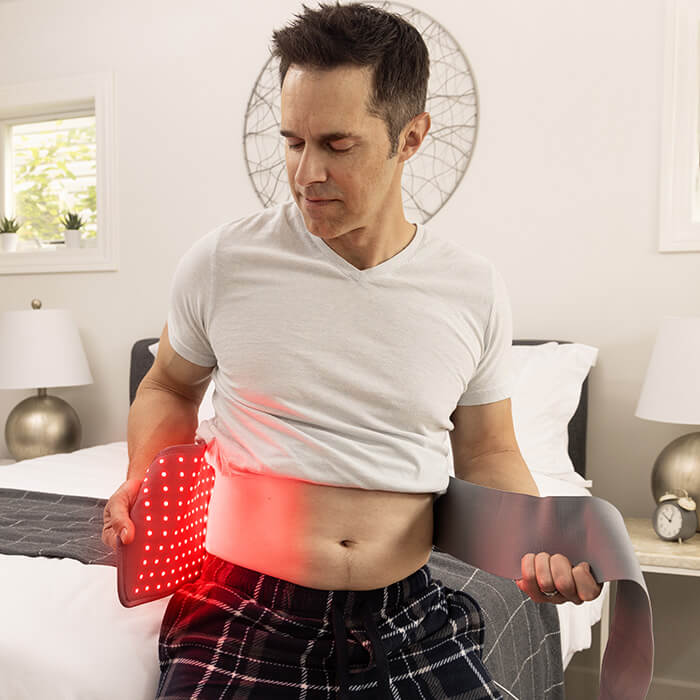Acupuncture or Chiropractor : What is Better for Sciatica ?
Introduction
Sciatica, a condition characterized by pain radiating along the sciatic nerve, can be a debilitating and persistent problem for many people. As the search for effective treatments continues, two of its alternative treatments, Acupuncture and Chiropractor therapy, are gaining attention. This comprehensive review examines the scientific aspects of both methods and evaluates their effectiveness in relieving sciatica symptoms.
Understanding Sciatica
Before delving into the benefits of acupuncture and chiropractic, it is important to understand the sciatica. Sciatica is usually caused by compression or irritation of the sciatic nerve, by a herniated disc, spinal stenosis, or other spinal conditions. This condition manifests as sharp, stabbing pain, tingling, or numbness along the sciatic nerve, which runs from the lower back to the leg.
Acupuncture for Sciatica

An integral part of traditional Chinese medicine, acupuncture has been practiced for centuries as a holistic approach to curing various ailments. The core philosophy of acupuncture revolves around the concept of Qi, the body’s vital energy that flows along specific channels called meridians. Inserting fine needles at strategic points along the meridians is said to restore Qi balance, promote healing, and reduce symptoms.
Modern scientific research attempts to elucidate the mechanisms underlying the effectiveness of acupuncture for sciatica. A plausible explanation is the stimulation of the nervous system. When acupuncture needles are inserted into specific acupuncture points, nerve fibers are activated, which send signals to the brain and release neurotransmitters such as endorphins, the body’s natural painkillers.
This pain-modulating effect may contribute to the reduction in pain experienced by those receiving acupuncture treatment for sciatica.
A 2010 study published in the Journal of NeuroImage used functional magnetic resonance imaging (fMRI) to observe the brain's response to acupuncture in sciatica patients. The results showed that acupuncture not only activates pain-related brain regions but also affects regions associated with descending pain modulation systems. This suggests that acupuncture directly addresses local pain and activates broader pain-modulating mechanisms in the central nervous system.
Acupuncture is also said to have anti-inflammatory effects. Sciatica symptoms are often accompanied by inflammation, and acupuncture can help reduce the pain and swelling associated with sciatica by promoting the release of anti-inflammatory substances.
A 2011 study published in the Journal of Orthopedic Research found that acupuncture modulated inflammatory markers, suggesting a possible mechanism for its therapeutic effects.
Despite these promising results, it is important to recognize the need for more thorough research to fully understand the complexity of how acupuncture works for sciatica. Although several studies provide valuable insights, the complexity of pain mechanisms and the individual nature of acupuncture responses require further investigation.
Chiropractic Treatment for Sciatica
Chiropractic care focuses on the relationship between the spine and nervous system, with an emphasis on manual adjustments to correct misalignments and promote overall health. Chiropractors often make spinal adjustments to relieve pressure on the sciatic nerve to reduce pain and improve function.
Scientific research on chiropractic treatment of sciatica has also shown promising results.
A 2010 study published in the Journal of Manipulative and Physiological Therapeutics investigated the effectiveness of chiropractic adjustments in treating acute low back pain, including sciatica. The results suggest that chiropractic treatment significantly improved pain and function, and participants reported reduced pain and disability following spinal adjustment.
Additionally, a 2014 systematic review published in the European Journal of Physical and Rehabilitation Medicine analyzed RCTs on the effectiveness of chiropractic manipulation for sciatica. This review concludes that chiropractic manipulation may be a valuable option for the treatment of sciatica and may provide short-term relief of pain and disability.
Comparative Analysis
When weighing the benefits of acupuncture and chiropractor therapy for sciatica, it is important to consider personal preference, the severity of the condition, and the specific underlying cause. Although both approaches have shown promise in scientific studies, their mechanisms of action are different.
Acupuncture aims to influence the flow of energy in the body and stimulate the release of endorphins, the body’s natural painkillers. Chiropractor therapy, on the other hand, focuses on adjusting the spine to correct misalignments and improve the function of the nervous system, thereby reducing pressure on the sciatic nerve.
It is important to note that individuals respond differently to these treatments. Some people find relief with acupuncture, while others find greater benefit from chiropractor therapy or a combination of both.
Frequently Asked Questions
Q1: Does acupuncture hurt?
A: Acupuncture is generally well tolerated and is often described as having a slight tingling sensation. The needles used are very thin, so pain is minimal.
Q2: How many acupuncture sessions are required to relieve sciatica symptoms?
A: The number of sessions varies depending on the individual and the severity of the disease. Some people find relief after a few sessions, while others need more.
Q3: Are chiropractic adjustments safe for sciatica?
A: Chiropractic adjustments are considered safe when performed by a qualified and experienced physician. It is important to discuss your medical history with your chiropractor to ensure treatment is appropriate.
Q4: Can acupuncture and chiropractor therapy be used together for sciatica?
A: Combining multiple treatments is also an option, and some people find relief from symptoms with a multidisciplinary approach. However, it is important to consult with a medical professional to develop an individualized treatment plan.
Q5: Are these alternative treatments covered by insurance?
A: Insurance coverage varies, so we recommend checking with your insurance company to find out about acupuncture and chiropractic coverage.
Conclusion
In the quest for effective sciatica relief, acupuncture or chiropractor therapy stand out as promising alternative therapies. Scientific research supports their potential benefits, with studies indicating improvements in pain intensity and physical function for individuals with sciatica.
Ultimately, the choice between acupuncture or chiropractor therapy depends on individual preferences, the specific characteristics of the sciatica, and consultation with healthcare professionals. As with any medical decision, it is crucial to consider the overall well-being of the individual and explore the most suitable and evidence-based approach for sciatica management. Both acupuncture and chiropractic care offer holistic perspectives on healing, providing individuals with options to explore in their journey toward sciatica relief.
References
- Vickers AJ, Vertosick EA, Lewith G, et al. Acupuncture for Chronic Pain: Update of an Individual Patient Data Meta-Analysis. J Pain. 2018 Feb;19(2):455-474. DOI: 10.1016/j.jpain.2017.11.005
- Lee JH, Choi TY, Lee MS, Lee H, Shin BC, Ernst E. Acupuncture for acute low back pain: a systematic review. Clin J Pain. 2013 Feb;29(2):172-85. DOI: 10.1097/AJP.0b013e31824909f9
- Yuan QL, Guo TM, Liu L, Sun F, Zhang YG. Traditional Chinese medicine for neck pain and low back pain: a systematic review and meta-analysis of randomized controlled trials. PLoS One. 2015 Apr 10;10(4):e0117146. DOI: 10.1371/journal.pone.0117146
- Chou R, Huffman LH; American Pain Society; American College of Physicians. Nonpharmacologic therapies for acute and chronic low back pain: a review of the evidence for an American Pain Society/American College of Physicians clinical practice guideline. Ann Intern Med. 2007 Oct 2;147(7):492-504. DOI: 10.7326/0003-4819-147-7-200710020-00007
- Cherkin DC, Sherman KJ, Avins AL, et al. A Randomized Trial Comparing Acupuncture, Simulated Acupuncture, and Usual Care for Chronic Low Back Pain. Arch Intern Med. 2009 May 11;169(9):858-66. DOI: 10.1001/archinternmed.2009.65
- Qaseem A, Wilt TJ, McLean RM, Forciea MA; Clinical Guidelines Committee of the American College of Physicians. Noninvasive Treatments for Acute, Subacute, and Chronic Low Back Pain: A Clinical Practice Guideline From the American College of Physicians. Ann Intern Med. 2017 Apr 4;166(7):514-530. DOI: 10.7326/M16-2367
- Furlan AD, Yazdi F, Tsertsvadze A, et al. A systematic review and meta-analysis of efficacy, cost-effectiveness, and safety of selected complementary and alternative medicine for neck and low-back pain. Evid Based Complement Alternat Med. 2012;2012:953139. DOI: 10.1155/2012/953139
- Rubinstein SM, van Middelkoop M, Assendelft WJ, de Boer MR, van Tulder MW. Spinal manipulative therapy for chronic low-back pain: an update of a Cochrane review. Spine (Phila Pa 1976). 2011 Feb 1;36(13):E825-46. DOI: 10.1097/BRS.0b013e3182197fe1
- Bronfort G, Haas M, Evans R, Leininger B, Triano J. Effectiveness of manual therapies: the UK evidence report. Chiropr Osteopat. 2010 Feb 25;18:3. DOI: 10.1186/1746-1340-18-3
- Leboeuf-Yde C, Hestbaek L. Maintenance care in chiropractic – what do we know? Chiropr Osteopat. 2008 Sep 2;16:3. DOI: 10.1186/1746-1340-16-3
- Paige NM, Miake-Lye IM, Booth MS, Beroes JM, Mardian AS, Dougherty P, Branson R, Tang B, Morton SC, Shekelle PG. Association of Spinal Manipulative Therapy With Clinical Benefit and Harm for Acute Low Back Pain: Systematic Review and Meta-analysis. JAMA. 2017 Apr 11;317(14):1451-1460. DOI: 10.1001/jama.2017.3086







